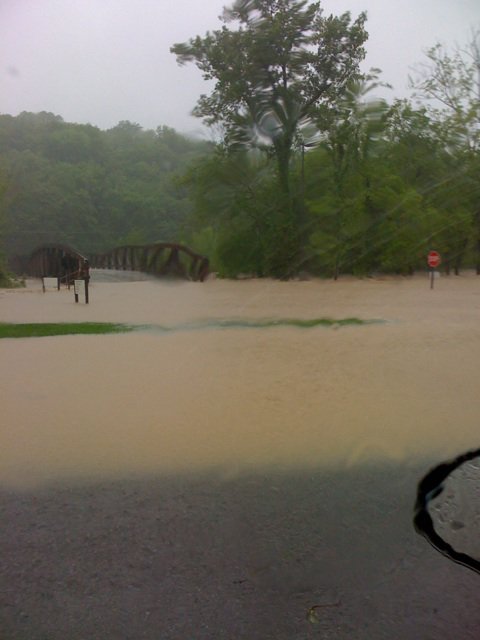Once a week, I will do a ‘What Can I Do Today’, where we try to build up our preparedness supplies in increments. For example, today we will discuss buying a backpack to use as a Car Bag, to hold essentials that would be able to tide you over for 72-hours. Next week at this time, we will discuss one of the component areas that should go into your bag, such as food, water, medical or shelter. Over the course of a month or 5 weeks we will build out your bag in increments so it is not too much expense all at once, and we can take a good look at individual components of a Car Bag, instead of just throwing a huge list at you. By the end of this process, you will have a fully stocked 72-hour kit!
You may have heard the term BOB or Bug-out Bag, or 72-hour kit, either on this site or many other preparedness sites. I personally call it a Car Bag, because that’s where it lives and because it makes me sound less like some crazy fringe survivalist-type than having a Zombies are Coming Bug-Out-Bag! I would call it one of the cornerstone’s of preparedness, partially due to its simplicity, but mostly due to the level of peace it provides. Having one is recommended by Ready.gov as well as other governmental and private organizations.
As putting one together would take more than the time allotted for a ‘WCIDT?’, today we’re just going to do Phase 1: Picking out a bag.
What Type of Bag Should I Get?
This is the big question, and it really depends on what you are comfortable with. If you drive only a few miles to and from work today, and you never leave your town, odds are you could get away with a school-style backpack carrying just the essentials. If you regularly drive cross-country, live in a very rural area, or live in an area prone to disasters, I’d recommend a larger hiking-style backpack, as well as maybe a small tote to hold some additional supplies.
Let me state that any gathering of supplies will be helpful in an emergency situation, so if you choose to have just a fannypack hidden under the seats of your vehicle with a small first aid kit, 16oz bottle of water, flashlight, and lighter, you are well ahead of half the population. However, I am going to advocate that you, and every teen or older member of your family, have a full-size hiking/camping pack in the back of your vehicle. To not feel left out, (and to teach them young!) I’d suggest that even the youngest member of your family should have their own pack according to their ability to carry it.
Why?
The reason I recommend a larger bag is simple: it holds more stuff. If a tornado or fire destroyed your home, a full 72-hour kit would at least let you set up in a hotel or friend’s house with a fresh change of clothing and needed toiletries while you try to figure out how to get your life back in order. How about the peace of mind it would provide you to know your teen who is headed to college 300 miles away doesn’t have to worry about the basics if their car breaks down?
I’ve also seen more than my fair share of stories in the northeast and northern plains states having snow and ice storms that literally trap people in their cars for 48 hours or more. Having an extra sweatshirt and thermal emergency blankets on hand may actually save lives.
So all that said, what should you think about when buying a backpack? First, get one with a frame, either internal or external. An internal frame is probably better if you don’t plan on carrying it regularly. It allows the weight to be carried close in to the body, which is helpful with your center of gravity and balance. Both my hiking and 72-hour kit backpack are internal frame packs.
If you are an outdoor enthusiast who regularly backpacks, you could go with an external frame. These are good if you really have a lot of weight in the pack, as the external frame helps distribute it. Plus, the frame is useful for attaching a wide variety of items.
Next, make sure it has a hip belt, preferably with padding. If you have to hike with it to the next exit because you broke down in the middle of nowhere, it should definitely be as comfortable as possible! If you can find one with a chest strap, that is another good feature, though for the ladies make sure it is not uncomfortable.
Finally, make sure it can carry what you need it to carry! Mine is about 4000cc and still has some more space left that I plan on filling up at some point. Anything over 3500cc should make for a pretty solid 72-hour kit.
Some decent packs that won’t break the bank:
This Teton Sport is around $70 and 3400cc.
A huge 6200cc pack for $53 delivered.
For a full list of packs, check here. Also, make sure you check the reviews for any important information.
Also, make sure you check the reviews for any important information.
(Please note this caveat; these are bags I would suggest for a 72-Hour Kit, as something that wouldn’t be carried around hiking day-in and day-out. There’s a whole extra set of criteria for picking a good hiking/camping pack that you will be using regularly. While my hiking pack and Car Bag are of similar size, my car bag cost 1/3 of my hiking pack, and I expect less of it, as its main job is to just sit in the back of the Jeep ready to help at a moment’s notice!)

